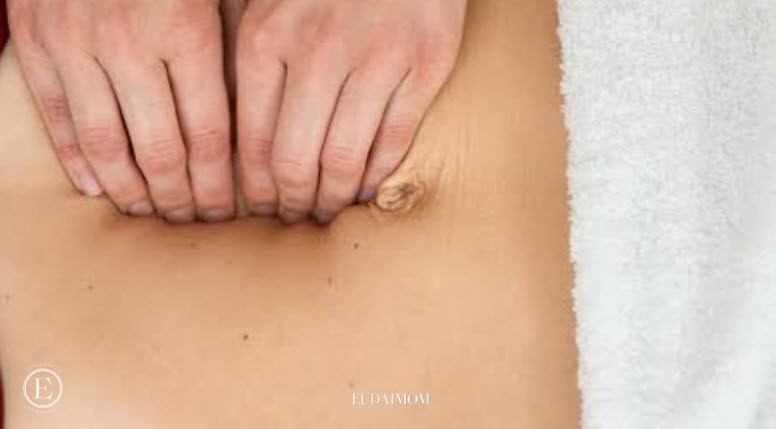Diastasis recti is a very common condition in pregnant women: Learn about the problem
If you’re a new mom or a first time mom, you might not even know what it is! However, it is very important for you to be aware of this. Diastasis recti is a very common condition in pregnant and postpartum women. In this condition, your abdominal muscles or rectus abdominis muscles stretch during pregnancy to accommodate the growing baby. This separation is what makes your belly bulge out for several months or even years postpartum. Most people are not aware and think it’s normal, and hence are not able to do anything about it and learn to live with it.
What exactly is Diastasis Recti?
A muscle, called Rectus abdominis, runs vertically along the front of your stomach. During pregnancy, as your abdomen is expanding, this muscle starts stretching too. Since this muscle is divided into two parts (frequently referred to as abs), due to expansion, they separate at times. Usually after delivery, the band retracts and heals, making your stomach the same as before. At times though, it loses its elasticity and is unable to retract back. This is called Diastasis recti. Your belly may appear protruded for quite a long time post delivery.
How common is Diastasis Recti?
It is an extremely common condition in pregnant and postpartum women, although there is no adequate awareness. It affects 60% of people. It usually resolves itself within eight weeks of delivery. About 40% of those who have diastasis recti still have it by six months postpartum.
Symptoms of Diastasis Recti
Most people don’t recognise the symptom during pregnancy as your belly is quite stretched, so nothing appears out of the ordinary. However, postpartum it is much more recognisable.
Here are a few common signs you can watch out for-
- A bulge above or below your belly button
- Soft mass of skin, which might feel like a jelly or water pouch
- Lower back/hip pain
- Pain during sex
- Abdominal area feeling weak
- Constipation
Your belly might cone or dome at times, when you are sitting or getting up. This is also one of the common signs of Diastasis Recti.
Common Risk factors For diastasis recti
There are several factors due to which Diastasis recti may occur. The most common ones are-
- Multiple pregnancies (mostly back-to-back)
- Multiple babies at a time
- Heavy/ big baby
- Petite/ thin mom
- Vaginal delivery
- Age over 35 years
How do I test myself for diastasis recti?
You can test yourself for diastasis recti:
- Lie on your back with your knees bent and feet flat on the floor.
- Lift your shoulders slightly off the ground, keeping one hand behind your head for support. Almost like you are doing a sit-up. Look down at your belly.
- Move your other hand above your belly button area, palms down and fingers towards your toes.
- Use your fingers to feel for a gap between the abs. See how many fingers can fit in the gap between your right and left abdominals.
If you feel a gap of two or more finger widths, discuss your concerns with your healthcare provider. They should confirm diastasis recti with a proper diagnosis and recommend appropriate care.
How can I fix diastasis recti?
To fix diastasis recti, you’ll need to perform gentle movements that engage the abdominal muscles. Before starting an exercise program, be sure it’s safe for diastasis recti. Work with a fitness professional or physical therapist who has experience with diastasis recti. They can create a treatment plan to make sure you are performing the movements correctly and progressing to more challenging movements at the right time. Certain movements will make abdominal separation worse. During the postpartum period, there are some modifications you should make:
- Avoid lifting anything heavier than your baby.
- Roll onto your side when getting out of bed or sitting up. Use your arms to push yourself up.
- Skip activities and movements that push your abdominals outward (like crunches and sit-ups).
Some people use binding devices (elastic belly bands) to help hold their belly in and support the lower back. Wearing binders can’t heal diastasis recti and will not strengthen your core muscles. It can be a good reminder of your diastasis recti and promote good posture.
Breathwork and Yoga for diastasis recti
Breathwork is an important facet of healing your Diastasis. Full yogic breath, belly breathing and 360 breathing are some ways to actively bring the abdominal muscles closer again.
Movements that work wonders for the abdomen are;
- Gentle leg lifts
- Double leg lifts
- Reverse crunches
- Planks and forearm planks
- Mountain climbers
Once you’ve checked yourself for diastasis and get your doctor to diagnose the symptoms, take an active stance and plan your workouts and breathwork around it. It is a great idea to keep checking your diastasis monthly to check on micro changes that happen as you continue to strengthen your practice. Healing your diastasis can take time but you will surely end up with a powerful core.













